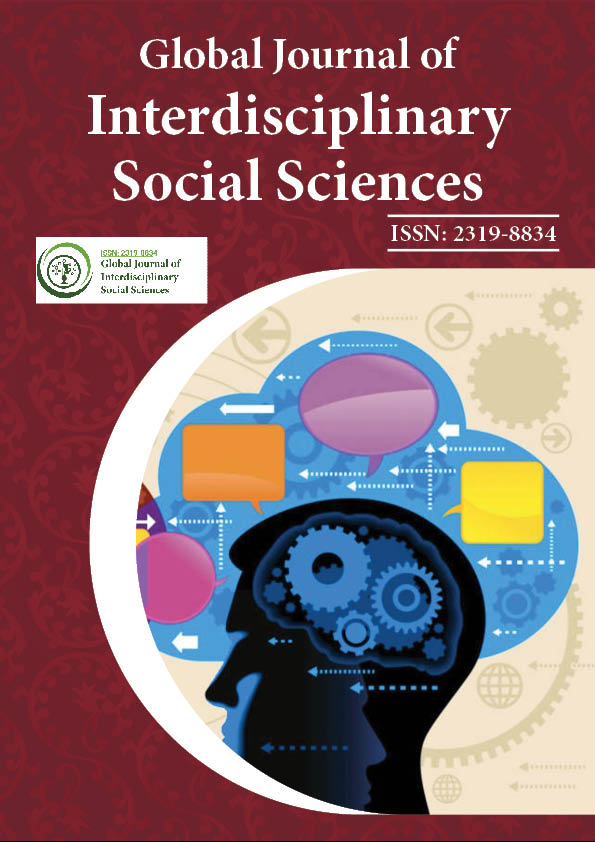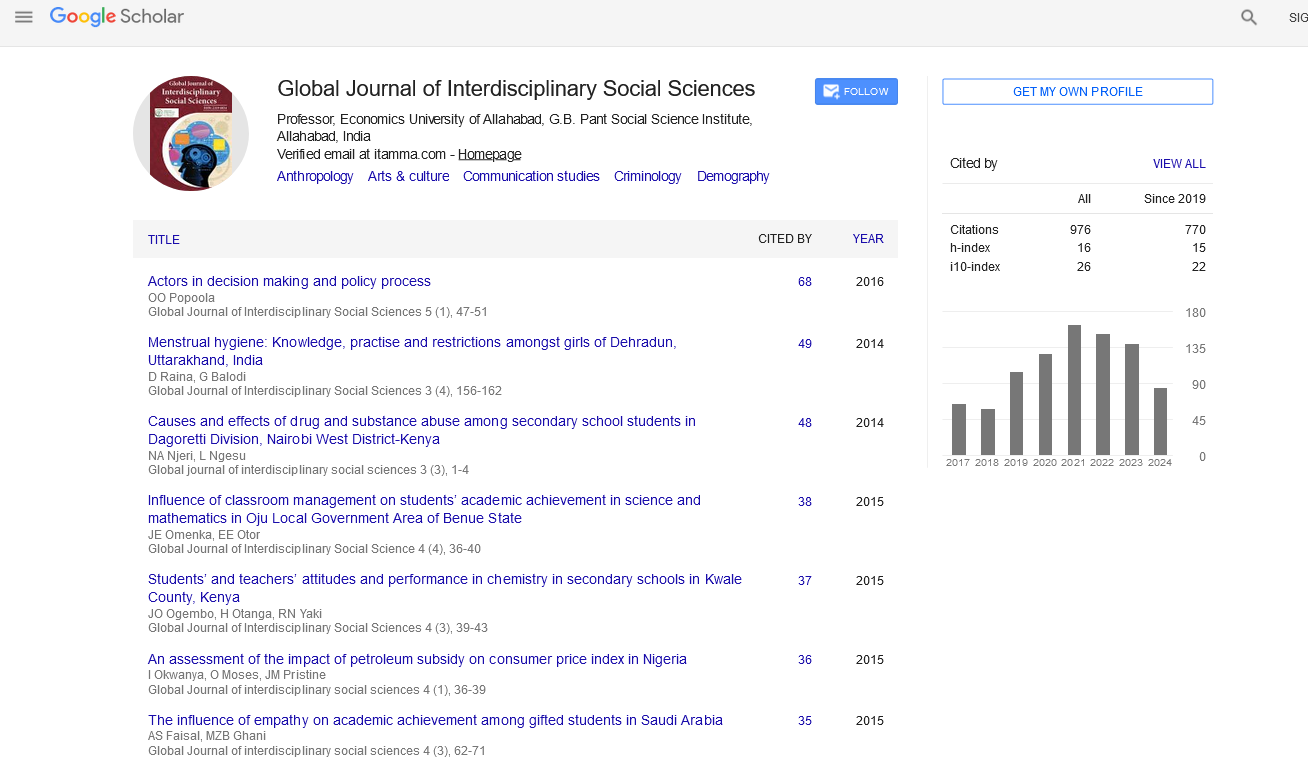Indexed In
- JournalTOCs
- Google Scholar
Useful Links
Share This Page
Journal Flyer

Open Access Journals
- Agri and Aquaculture
- Biochemistry
- Bioinformatics & Systems Biology
- Business & Management
- Chemistry
- Clinical Sciences
- Engineering
- Food & Nutrition
- General Science
- Genetics & Molecular Biology
- Immunology & Microbiology
- Medical Sciences
- Neuroscience & Psychology
- Nursing & Health Care
- Pharmaceutical Sciences
Commentary - (2022) Volume 11, Issue 4
Federalism and the Formation of States in India
Mark Gaden*Received: 04-Jul-2022, Manuscript No. GJISS-22-17844; Editor assigned: 07-Jul-2022, Pre QC No. GJISS-22-17844(PQ); Reviewed: 22-Jul-2022, QC No. GJISS-22-17844; Revised: 29-Jul-2022, Manuscript No. GJISS-22-17844(R); Published: 08-Aug-2022, DOI: 10.35248/2319-8834.22.11.028
Description
The Indian political system and its Constitutional framework has been the mostly debated political textual content in the post independent period. This is because of its complicated nature and character of diversities and pluralities. The social composition and the nature of the economic system usually affect the politics of a country or a state. As a salient feature of the Indian Constitution, the concept of federalism or federation is debatable in the sense that, in a rapidly converting sociopolitical scenario, the Indian Parliamentary Federal System has been under immense pressure internally and externally. It faces many difficulties in adapting the constitutional concept and practice in the emerging global situation where divergent forces of globalism and localism are struggling for equilibrium. On one hand, in the nation, regional and local forces are maintaining their identities for recognition at the national level and on the other hand, the federal states are experiencing numerous regulations on their power and autonomy from both international and local entities. Much of the literature on federalism shows that there is a need to promote better federal democratic governance especially in developing countries.
The British rule in India additionally had centralized the complete administrative procedure as per their convenience. The colonial nation turned into realigning the territories of diverse provinces and regions arbitrarily (without people’s consent) and Indian states has lost their autonomy, rights and privileges. In this context, to gain full-fledged autonomy, rights and freedom, they started demanding the reorganization of state limitations in all parts of the country. British-India followed the federal system as a way to avoid political chaos and secure hegemonic administrative control in India. Subsequently, the British rulers found out that the Indian sub-continent cannot be ruled through a centralized administrative system because; the Act of 1833 was the final step for the centralization of power in British India. Later, the Government of India Acts from 1917 to 1935 played very important roles in terms of incorporating the federal shape and standards in the governance of India. In the early 1920, the Indian national congress, because the main political party of the country, promised to reorganize the Indian states after independence. After the formation of Andhra Pradesh in 1953, many social movements started demanding for separation of states for development in recognition of their respective identities. The demands have been especially to recognize their identity in socio-cultural values and norms in a numerous society. Such demands were made by the Gorkhaland movement in West Bengal, the Bodo Movement in Assam, the Coorg Movement in Hyderabad-Karnataka region, the Tribal Movement in Jharkhand for making local language because the medium of education and so on.
Conclusion
The debate continued between the union constitution committee under the chairmanship of the then Prime Minister Jawaharlal Nehru and the drafting committee chaired by Dr. Ambedkar. Finally, the word ‘union’ turned into integrated in the Indian constitution as per Ambedkar’s suggestion. The ‘Union of States’ implies a federal constitution based on a dual polity, he clarified because the Federal Constitution can offer the expression of regional development and country wide objectives. It additionally aims to deal with numerous aspirations and sovereign interests of different provinces with ethnic groups and linguistic characteristics.
Citation: Gaden M (2022) Federalism and the Formation of States in India. Global J Interdiscipl Soc Sci. 11:028.
Copyright: © 2022 Gaden M. This is an open-access article distributed under the terms of the Creative Commons Attribution License, which permits unrestricted use, distribution, and reproduction in any medium, provided the original author and source are credited.

